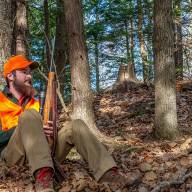Daniel Burnham master-planned Chicago for the 1893 World’s Fair. One of the best urban planners ever, said: “Make no small plans, they will be lost in argument and controversy, only a large vision will succeed.”
The Mad River Valley is at the cusp of a possible future vision that can carry the region for centuries. First, we should recognize the fortunate situation we are in.
We don’t have the Barre-Montpelier Road, the Killington Access Road, the Stowe access from Waterbury to the mountain or Route 7 and the grubby strip mall lined roadways. We do have a valley center that is weak at its core. This is shown by the empty and closing restaurants, the lack of night life and the auto-centric configurations of the two shopping centers on both sides of Route 100.
Fortunately, the open spaces that were part of the Kenyon Farm (most of Irasville in the past), are still open,
As IMPei, the architect of the national gallery and the addition to the Louvre in Paris says, it is time for surgery.
This is almost the perfect storm in challenging the future. Climate change and the global requirement to modify behavior, overuses of resources and the need to preserve land, presses in more clearly than ever. The demand for affordable, safe, and efficient housing is at a crisis level. Irasville is high and dry, and yet has wetland and soils issues (as does nearly all of Vermont).
The demand for second homes in The Valley, where migration from the cities is occurring, is expanding as is the number of new residents coming here for a primary home. The subdivision of The Valley is more and more attractive as a money maker. Farming is changing and open spaces are threatened.
OK, this is not new, it is just closer to home.
Given the climate change pressure, and the demand for housing both for the newcomers but especially for the workforce, the overwhelming charge given to planners and communities is clear: concentrate new development in existing villages. Our only choice is Irasville. The public input at the Madsonian last summer is summarized and available to see in a dedicated Irasville gallery room, open to the public. What is clear is that there are two or three overlapping and conflicting issues that require dialogue, compromise, and a shared vision. One is the wetlands that are throughout Vermont, another is the need to develop sensible and lasting new commercial and housing projects that combine to create an active, year-round valley center.
And the third is to support and include those features other than the opportunity to buy things; for example, the Skatium arena in its developed form will be a venue year-round for events, demonstrations, exhibits and more, included is a village inn and small hotel that acts as The Valley guest room and center for exchange of ideas, conferences, and the like. A large open town green is critical as well as traditional village shops with housing on top, as in Woodstock, Bristol, Randolph, and most Vermont towns.
Also important is a nature center, a visitor center by the wetlands pathways to explain and clarify how the natural world and the man-made world can share the same spaces with compromise and dialogue that secures an intelligent future configuration.
A bold new vision for Irasville is a bold new vision for the Mad River Valley. By focusing growth, the variety and spice of community will thrive. However, the complexities and variety of opportunities and challenges require a level of sharing and alignment and willingness to compromise that is needed for success.
Go big or don’t go.












